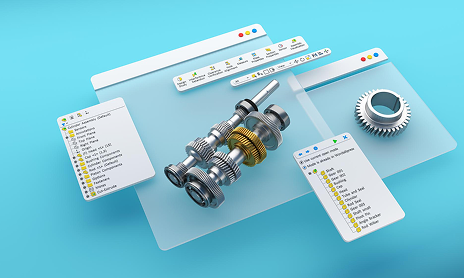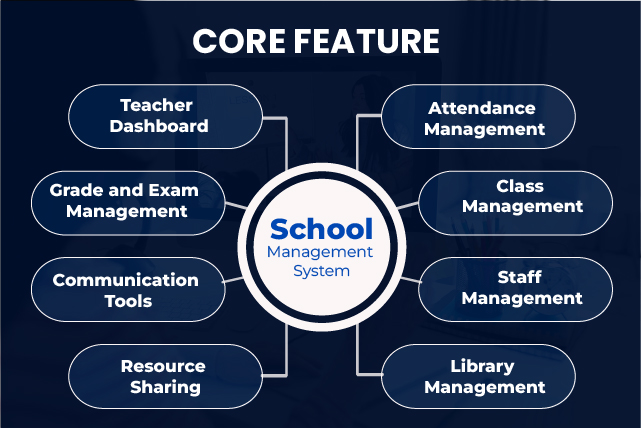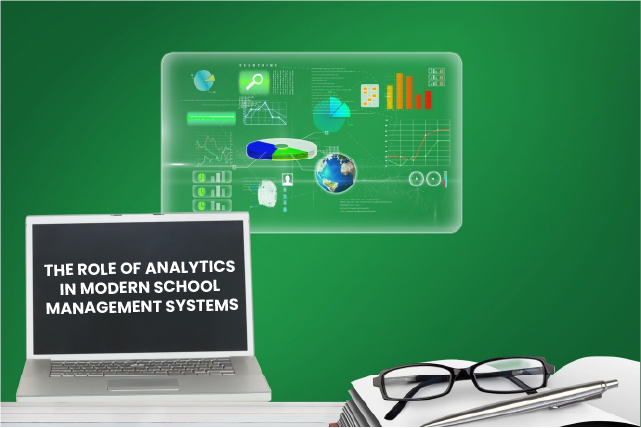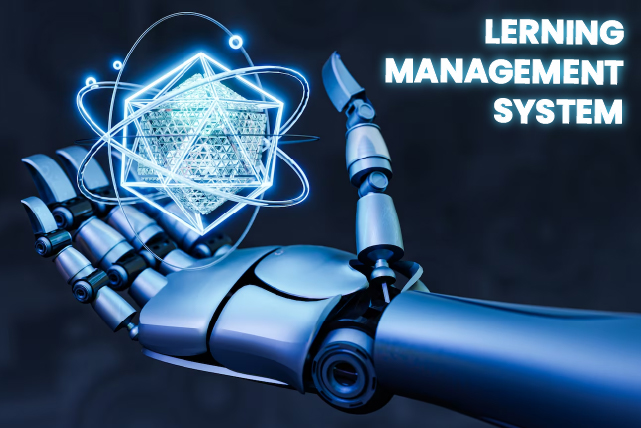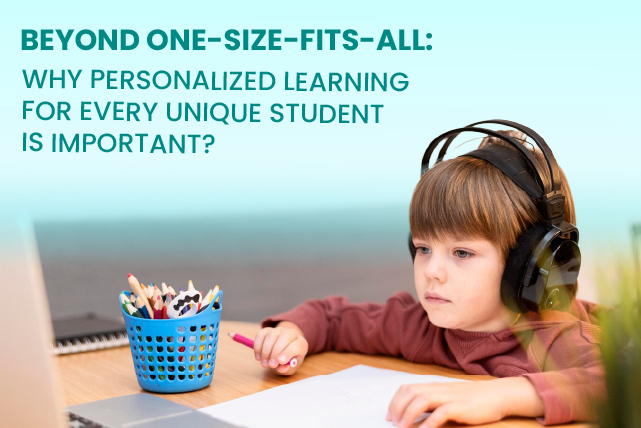
Top LMS Trends 2025: Transforming E-Learning with Innovation
What if instead of having to gather the course materials, find new lecture videos and study groups, keep track of our academic certificates and records all by ourselves and spend hours preparing to learn something, we could have it all in one place, customized to our learning ability, pace and requirement?
Top LMS trends are making it possible and elevating our e-learning experience to the next level in 2025. With innovations and technological advancements, we have everything we need for learning and skill development, which we can use whenever and however we want.
Top LMS Trends Transforming E-Learning in 2025
Learning is different for everyone. One approach does not work for everyone in cases of learning. This is where modern learning management systems come in handy.
With the latest trends like gamification in learning, AI in learning management systems, mobile LMS platforms and many more, the learning methods are being tailored according to our needs instead of us having to fit into one certain system.
These trends allow us to use e-learning more effectively and incorporate technology into our learning, for a better learning experience.
This is how LMS trends will transform your learning experience in 2025:
- AI-Powered Personalization in LMS
Artificial intelligence is being used to personalize the user experience by analyzing data and adapting the learning materials to the way it would be most effective for them.
AI is used to analyze user data, previous interactions, searches to personalize study materials, and recommendations to create a learning path most suitable for the user.
The use of technologies like speech recognition and performance tracking provides a personalized assessment to improve performance. AI in LMSs also provides interactive learning tools, chatbots and real-time support for a better learning experience.
These make LMSs a lot more beneficial and efficient while saving us time. Digital education platforms like Khan Academy, Duolingo, Elsevier Adaptive Learning (EAL) and Realizeit use adaptive learning to make their content more engaging and easier to learn.
- Gamification: Wave Goodbye to Monotonous Learning
Due to the declining attention span of learners today and the constant need for stimulation, incorporating game-like elements into your Learning Management System has become indispensable.
As new cutting-edge technologies are coming into being, it is only a matter of time before in 2025, gamification will have a positive momentum. Students, corporates, and people alike will bear testimony to an irresistible and nail-biting learning experience.
Gamified Elements like points, badges, leaderboards, and awards turn mundane repetitive tasks into immersive experiences where learners won’t feel forced to learn but rather excited for the next big challenge.
Individuals of all ages can actively participate in these experiences as they streamline the complex concepts, making the retention of information easier than ever.
The thing is, we all know how to play, which is why people adapt to it faster. Statistically, gamification can amplify employee engagement by up to 48%, and in educational settings, learners witnessed a 34.75% spike in their overall performance, further proving how effective it will be in the forthcoming days.
- Mobile-First LMS Designs
The objective of mobile-first design hinges on tailoring an interactive and flexible design so that it aligns seamlessly with a wide range of screen sizes and devices.
If the information you are trying to convey is not always on standby then what’s the point? This is why the core values of mobile-first design are minimalism, availability and prioritization of content. This way people from all spheres and backgrounds regardless of their circumstances can obtain knowledge right when they need it on smaller screens.
Including learners with disabilities, and ensuring equal opportunities aka inclusion should be the topmost priority for any institution. Effortless navigation, scalable fonts, interactive layouts, and features like alt text enhance the learners’ experience, especially learners with disabilities.
Keeping that in mind, business giants and educators across the globe are employing mobile-first LMS designs not only to make education readily available but also for better SEO rankings.
A study done by the National Center for Education Statistics shows, 19% of undergraduate students in the U.S. alone had a disability in the 2019-2020 academic year. Moreover, 50% of global internet traffic emerged from mobile devices in 2021, and 70% students of in higher education use mobile devices to look for study-related information.
- Integration with AR and VR for Immersive Learning
The LMS platforms aren’t only elevating theoretical learning to a new level, practical learning and training are also more available now because of the integration of AR (Augmented reality) and VR (Virtual reality).
With smartphones or AR glasses, students can interact with digital content projected on their real-world surroundings. VR completely immerses learners in a virtual world, making it perfect for training in high-risk scenarios.
Using AR and VR in LMS for immersive learning creates a unique learning experience, enhances learner engagement, allows hands-on practical experiences in a risk-free space, personalizes the learning path for each and every user, and improves life skill development, making the contents easier to consume and remember.
LMS platforms like Open LMS, Skolasti LMS, Blackboard and Gyrus offer AR and VR integration to provide enticing learning experiences and boost engagement.
- Enhancing Learning with Secure and Scalable Cloud LMS Platforms
On cloud-based LMS, the LMS is hosted by a remote host operated by a third-party cloud provider. So, the user can access the course materials from anywhere, using any device with an internet connection.
The LMS works as a service provided through the cloud, so it does not require to be installed on local servers and lessens the IT management responsibilities on the users’ end.
Cloud security in LMS is also reliable as they are designed to protect our data and learning materials from unauthorized access by using passwords and pins.
Data encryption, strong authentication, controlled access and regular backups keep the data safe for the users even during system disturbances while providing easy and consistent access for users.
The cloud-based LMSs are also highly scalable. They can expand or shrink to accommodate any number of users and course content without having to make any big changes.
- Data-Driven Insights for Better Learning Outcomes
The LMS platforms use data analysis to keep track of user activity, and progress, and identify learning gaps to create unique and tailored learning paths for each and every user.
The data-driven insights can improve the learning outcomes significantly. With LMS performance tracking, these platforms track the performance, time spent on the platform, quizzes, and assessments to identify the weak points of a user and recommend necessary helping materials and sources to fix those. These insights are vital to creating an adaptive learning experience for the users to encourage their learning.
Instead of learners with different learning abilities, paces and habits having to adapt to the same course materials, users getting their customized materials to be used the way best suited and beneficial for them has been possible with data-driven insights in LMS.
- Social Learning Features in Modern LMS
Peer learning has always been proven to be a good method for a better understanding of the content. With the help of social learning features such as discussion forums, groups, online study rooms, peer assessments, and group projects, study groups are not limited to our organization or our specific friend group nowadays.
With the help of student engagement features in LMS and the increasing engagement, the whole world can be our classroom now and we can form our study groups with anyone, discuss the topics we want to learn and are interested in with like-minded individuals from any corner of the world.
It also lets educators and creators collaborate to create better learning materials for users. This not only benefits learners in cases of learning but also helps them to improve their communication skills, and team building and allows them to fit in easily by this shared learning experience.
- Microlearning Modules for Bite-Sized Knowledge
With the increasing use of social media platforms and short-time content, the attention span of the modern generation has been decreasing. To keep up with this, modern e-learning platforms have introduced bite-sized content to help their users' micro-learn.
These are short-length contents, emphasizing specific topics, easier to grasp best suited for learning on the go or when one has limited time. This makes education and learning easily accessible, regardless of the time they can invest in learning about that specific topic. Instead of looking up ways to increase attention span, users are now getting access to the same information, tailored for them.
Platforms like EdApp, eduMe, iSpring Learn, Qstream, OttoLearn, Axonify, LearnUpon, Learner Mobile, Grovo, Tovuti LMS, Whatfix, Gnowbe, and MobieTrain allow users to get access to bite-sized content suited to their learning abilities.
- Focus on Accessibility and Inclusive Design
Education is important to make the world a better place. But education which is not accessible to people from all walks of life, isn’t of use. People all over the world have already been giving importance to making traditional learning methods available for everyone, accessibility in e-learning has made this true for LMS platforms as well.
Technologies like text-to-speech, translator apps and live captions have made LMS platforms accessible to everyone including differently abled people. LMSs with bite-sized contents have allowed people with a short attention span or a limited time access to the contents suited to their needs.
We can use AI-generated live chat options, discussion groups, and chat rooms to discuss and share our knowledge. In today’s age, education is no longer restricted to the use of a few groups.
By using inclusive LMSs, people are breaking barriers of land, gender, and language and being able to learn freely. The flexible design of LMS platforms has made education accessible for everyone.
Bottom Line: New Future of Education
In this era of modernization, top LMS trends transforming education in 2025 are not out of fiction. Using data-driven insights and with the help of trends like AI-powered customization, education, learning and skill development is not a one-size-fits-all approach anymore.
With gamification, we are being able to learn and also enjoy the learning process. Mobile first designs and bite-sized contents of these LMS platforms are allowing us to keep up with the fast-paced future.
Collaborative e-learning features, and the use of AR and VR have made learning accessible to everyone. As a result, we can hope that by implementing these new trends in LMSs, we will be able to experience a new and effective era of learning in 2025.


